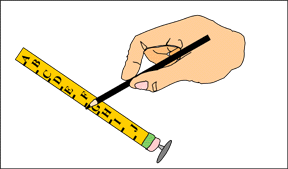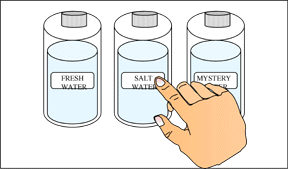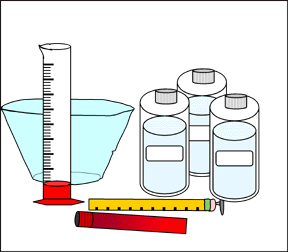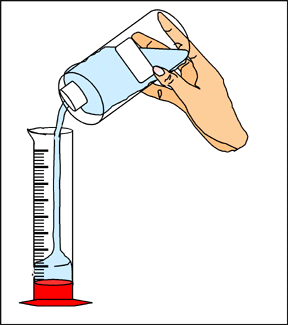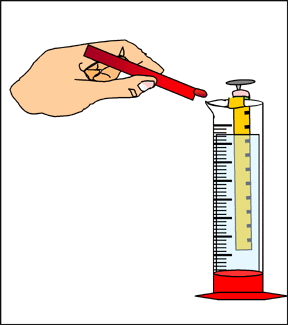 |
 |
|
|
|
Description:Students observe, measure, and compare the lengths of the portion of a pencil that floats above the water surface in fresh water and salt water. They then determine if an unknown water sample is fresh water or salt water, and predict how the addition of more salt to the salt water would affect the floating pencil. The task assesses students' abilities to make simple observations, measure volume using a graduated cylinder, measure length using a ruler, apply their observations and measurements to test an unknown, make generalized inferences from their observations, and apply their understanding to an everyday situation. This task is designed to take students approximately 20 minutes to complete.
Overall Task Content Area:
Specific Knowledge Areas:
Performance Expectations:
National Science Education Standards: 4 B PS 1: Properties of objects and materials: Grades
K-4 4 A SI 1: Ability to do scientific inquiry: Grades K-4
1.4 Use data to construct a reasonable explanation. This aspect of the standard emphasizes the studentsí thinking as they use data to formulate explanations. Even at the earliest grade levels, students should learn what constitutes evidence and judge the merits or strength of the data and information that will be used to make explanations. After students propose an explanation, they will appeal to the knowledge and evidence they obtained to support their explanations. Students should check their explanations against scientific knowledge, experiences, and observations of others. (Use the "hot" link on the PALS home page to check teh full text of related National Science Education Standards, if desired.)
National Council of Teachers of Mathematics: DAP3: Develop and evaluate inferences
and predictions that are based on data : MEAS1: Understand measurable attributes of objects and
the units, systems, and processes of measurement: MEAS2: Apply appropriate techniques, tools, and formulas
to determine measurements: PS1: Build new mathematical knowledge through problem
solving: RP2: Make and investigate mathematical conjectures:
COM1: Organize and consolidate their mathematical thinking
through communication:
At this station students should have:
Advance Preparation:Pencils must be unsharpened and marked off in one centimeter increments. Each increment should be labeled with letters beginning with "A" at the non-eraser end of the pencil. Salt water of any concentration can be used as long as adequate results (i.e. results differ from when fresh water is used) are obtained. In this example, the Mystery Water used was fresh water. Safety:
Extensions/modifications:
Advanced Preparation Set Up:
|
